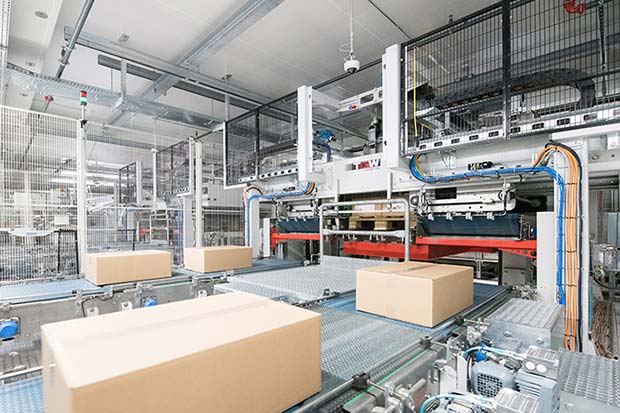More and more companies are making use of automated freezer warehouses instead of manual ones. Michael Schedlbauer, Industry Manager for Grocery at TGW Logistics Group, identifies several reasons for this evolution.
 The coronavirus pandemic in 2020 resulted in a disproportionately high growth in refrigerated logistics. People cooked at home more often and bought more frozen ingredients such as vegetables or fish. At the same time, demand for convenience products grew. In the US the frozen food sector grew by 20 percent. Numbers from Germany also reflect this trend.
The coronavirus pandemic in 2020 resulted in a disproportionately high growth in refrigerated logistics. People cooked at home more often and bought more frozen ingredients such as vegetables or fish. At the same time, demand for convenience products grew. In the US the frozen food sector grew by 20 percent. Numbers from Germany also reflect this trend.
Many companies are currently making investments in refrigerated logistics. Interest rates are low and whether COVID cases go up or down, people will always need to eat and drink. This makes the industry very stable and capable of withstanding external influences. Long-term investments in new automated warehouse structures are worthwhile. TGW recently completed a project with Dutch service provider NewCold, who partner with a renowned food and beverage producer.
Two trends are currently shaping the face of grocery retail: centralisation and insourcing. The COOP project in Schafisheim is a good reflection of the former. The Swiss company has centralised its freezer logistics and merged three regional distribution centres into one. Moreover, this facility is also the regional warehouse for fresh goods for Northeast Switzerland. As a result, this building includes multiple temperature zones in its 240,000 square metre footprint.
Drivers for automated refrigerated warehouses
If you look at the Total Cost of Ownership, warehouse automation is particularly valuable in freezer logistics. Stringent requirements exist in food retailing. The pick quality must be perfect, the deliveries must arrive on time and the refrigeration chain must be unbroken. Companies must be able to prove this without any gaps and at the touch of a button. Being less dependent on the labour market also provides additional peace of mind to many of those responsible for logistics.
Finding employees to staff freezer warehouses is nearly impossible in Western Europe. Working conditions are tough in the ice-cold temperatures. Employee turnover is high, despite the substantial wage premiums paid in many countries. It is becoming increasingly difficult to find, train and retain employees. Another complication is the amount of prescribed breaks, which means the workers are in the facility for a relatively short time compared to warehouses operated at room temperature. This is absolutely necessary for the work to be feasible and bearable over the long term.
In these times of increasingly severe climate change, many companies are also becoming aware of their responsibility to conserve resources. COOP for example, can reduce carbon dioxide emissions by up to 10,000 tonnes a year by centralising its distribution centres in a single, innovative, automated and volume-optimised facility.
Innovative shuttles to save energy
To ensure that shuttle systems work at -25 degrees Celsius, TGW uses the latest robot and drive technology. The solutions are adapted specifically to the customer and consists of several modules. The process begins at goods receipt. The palletised goods are inspected, given a label and fed into the high-bay warehouse at a temperature of -25 degrees Celsius. For order picking, goods are retrieved and depalletised as required and transferred to a tray and put into storage in the shuttle system. For picking according to the goods-to-robot principle, the required items are removed from storage, with the trays being sequenced and unloaded as required. Palletising is automated using Autostax robots. The articles are arranged on the customer’s load carrier – usually a pallet or rolling cart – according to various criteria. The customer load carriers are then secured automatically and made available in the correct sequence for transport by lorry in the outgoing goods buffer.




Comments are closed.